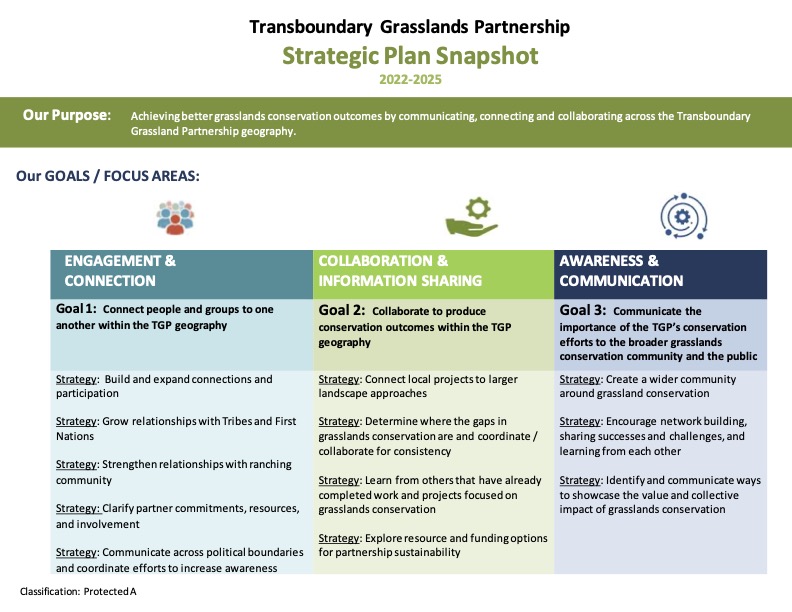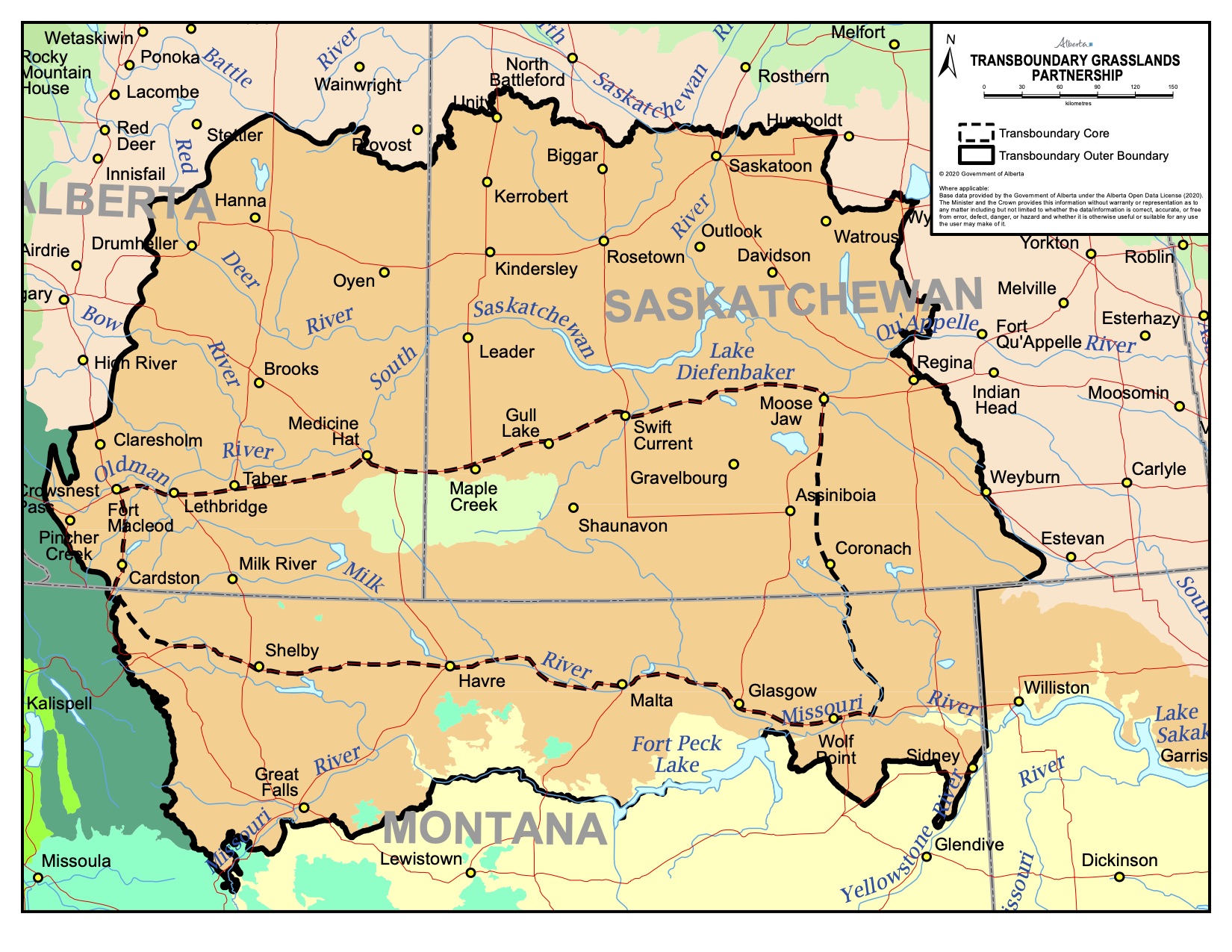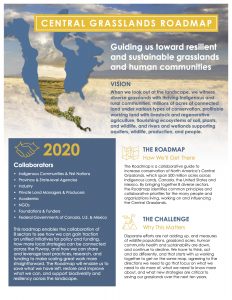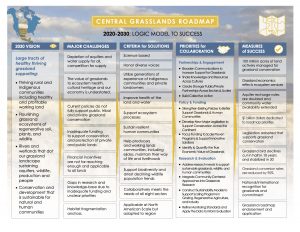Background:
In 2016, Alberta Prairie Conservation Forum initiated the Transboundary Grasslands Partnership recognizing that the environment doesn’t respect human boundaries. Watersheds, wildlife, air quality, invasive species…all parts of the environment transcend multiple boundaries on any given landscape. These boundaries are real and can impact the environment and our human objectives for it, especially at the edges of jurisdictions.
Alberta partners proposed joint workshop to explore the interest for a broader transboundary partnership with Montana and Saskatchewan. Objectives of the first workshop included:
- Becoming familiar with the broad scope of work and accomplishments of large landscape conservation transboundary collaboratives.
- Reviewing the status of existing transboundary grassland initiatives with a focus on successes, challenges and outcomes.
- Discussion around existing jurisdictionally‐based environmental, land use and natural resource management priorities and challenges. Identify potential topics where new or enhanced transboundary collaboration may result in better outcomes.
- Confirm interest in pursuing additional topical transboundary issues or a broad grassland transboundary large landscape collaborative.
Previous Transboundary Grasslands Partnership Workshops
Transboundary Grasslands Partnership Terms of Reference





